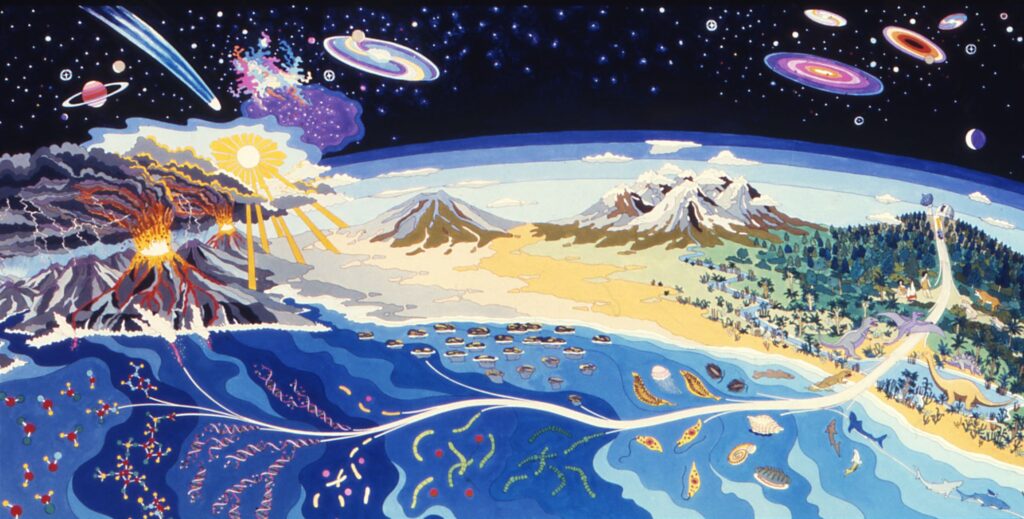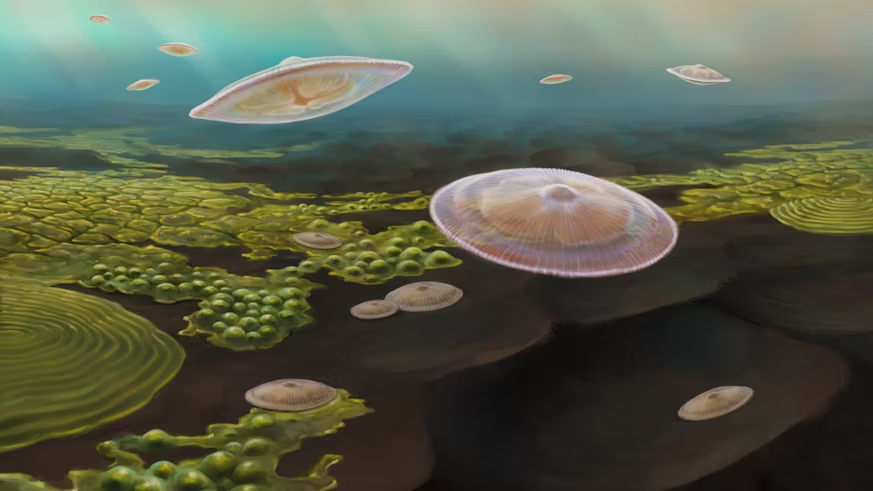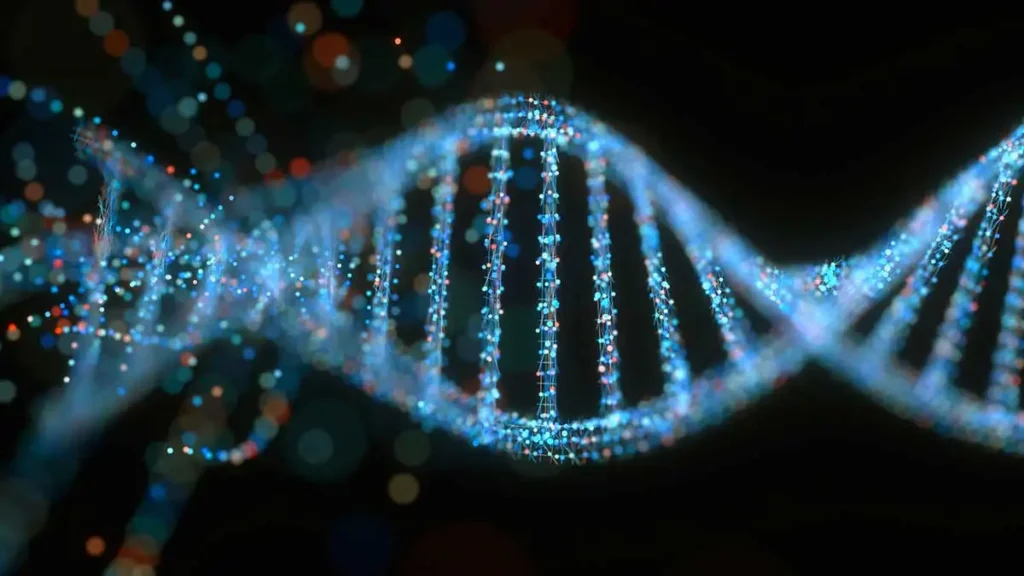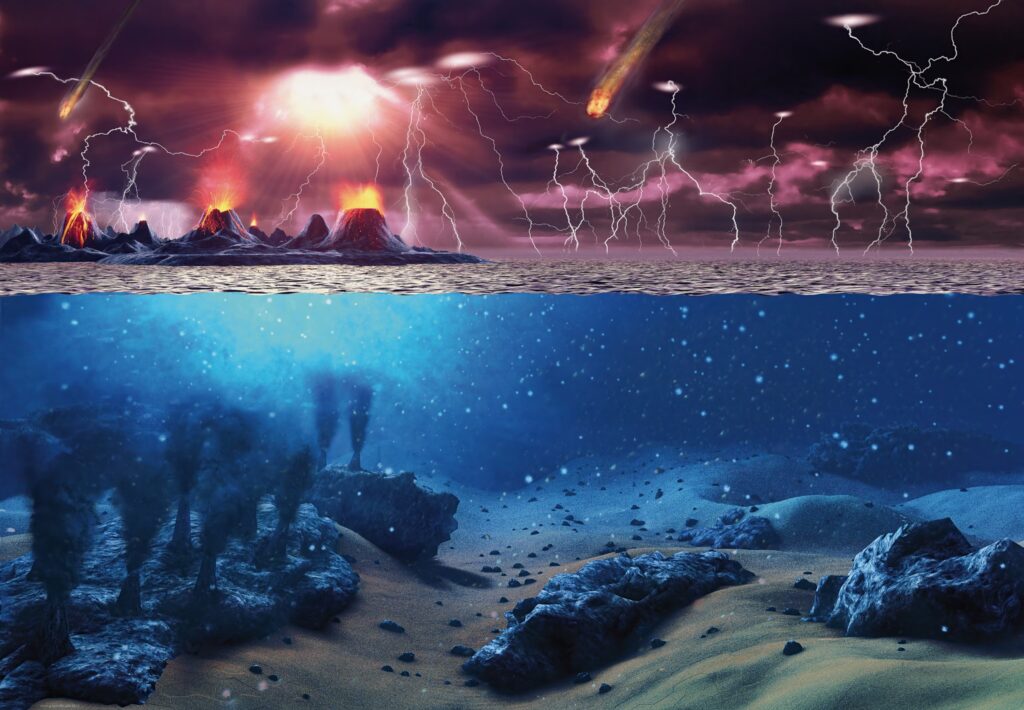The fact about the origin of life on Earth remains mystery. Scientists propose several compelling theories about it. But one of the prominent ideas suggests that life originated in hydrothermal vents, deep-sea locations where chemical reactions are fueled by Earth’s internal heat.
Another famous theory focuses on shallow ponds where organic molecules could have concentrated and interacted, potentially forming the building blocks of life which is called cell. A combination of these scenarios, like a pond formed by an impact near a vent, is also considered. Many researches have been taken into these possibilities of involvements exploring ancient Earth environments. While studying the chemistry of life’s origins and even searching for life on other planets several other theories have under been consideration.

In many schools today, kids are educated about the source of life on Earth. Most scientists believe that the entire universe started with a ‘Big Bang’; this theory was based on the work of Albert Einstein and many others.
The Evolution Theory explains that life on Earth began with simple organisms. These small organisms developed over millions of years into animals and finally into human beings. This process, called ‘evolution’, was presented by Charles Darwin in 1859 and it has been adopted by many scientists ever since.
But today, many scientists doubt Darwin’s theory. We have learned a lot about our existence, and to many of our finest thinkers it seems almost impossible that life on Earth has evolved through evolution.

But exact origin of life on Earth is still one of science’s greatest mysteries, but many researchers have pieced together a likely scenario based on geology, chemistry and biology to find these mysteries.
About 4 billion years ago, our Earth had no oxygen but was rich in several volcanic activities, lightning and hydrothermal vents, places where hot, mineral-rich water surged from the ocean floor.

These extreme environments may have provided the perfect conditions for simple molecules like methane, ammonia and water to combine into more complex organic compounds that includes amino acids and nucleotides, which are the building blocks of proteins and DNA.
Over time, these molecules likely gathered in shallow pools or deep-sea vents, forming more stable structures that could store information and make copies of themselves.
Please listen this article here-
One theory, the “RNA world” hypothesis, suggests that RNA, capable of both storing genetic information and acting as a catalyst, was an early step toward life.
Eventually, these self-replicating molecules were enclosed in protective membranes, forming the first primitive cells, marking the beginning of life on Earth.

1 comment
Hue gtwy
Perfect article about science